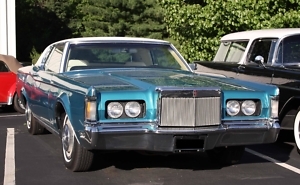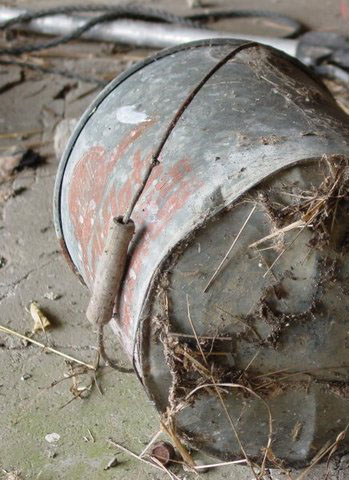Glorious Patchwork
It’s the ragged patches that make us who we are
When I was in middle school, my parents came into possession of a giant blue sedan that had been orphaned upon the death of an octogenarian friend. The car, which probably hadn’t been driven for a decade, was a vehicle that only a bootlegger could love.
T he trunk was higher than the nose, and the seats were upholstered in a quasi-brocade that would have been comfortably deployed on the walls of an nineteenth-century saloon. Had this unfashionable American-made auto not been abandoned in the basement garage of a suburban residential tower, it could have loaned verisimilitude to a fictional crime scene on the set of, say, Starsky & Hutch.
he trunk was higher than the nose, and the seats were upholstered in a quasi-brocade that would have been comfortably deployed on the walls of an nineteenth-century saloon. Had this unfashionable American-made auto not been abandoned in the basement garage of a suburban residential tower, it could have loaned verisimilitude to a fictional crime scene on the set of, say, Starsky & Hutch.
God knows my family needed that car, so I don’t mean to look the gift horsepower in the mouth. But, damn, it was ugly. And I was in middle school, where Ugly raised to the power of Embarrassment equals Torture.
Not long after that torturously ugly car became our primary family vehicle, somebody sideswiped it, leaving a gash along the driver’s door. It should be perfectly evident by now that my family were not “car people,” so it follows that my dad set out to remedy this blemish with a can of blue spray paint.
Contrary to Dad’s expectation, spray paint does not surgically seek the lowest point of a scrape. Spray paint is just happy to be free. Instead of discreetly filling the gashed metal, it created its own irregular footprint of cloud graffiti, which Dad tried to even out by going over and over it, until eventually the entire car door was painted.
And did I mention that the spray paint was about fifteen Pantone numbers off the underlying car paint? If the car was the hue of a blue blazer, the door was now the color of Robin Williams’s cartoon genie in Aladdin. This whole debacle left Mom driving a blue-on-blue crazy-quilted whale of a lemon and left me going to extreme measures to find alternate transportation.
I think about that car a lot.
For one thing, I realize my current car is not adequately embarrassing to properly motivate my children to carpool.
For another, I think of it when I get calls at work from people who need small “patches” at their house. Patching seldom goes as hoped. Sure, if you need to feather in some ceiling white after you’ve done drywall work around a light fixture, that’s most likely going to be fine; you can paint one wall of a room and no one will be the wiser; and I’ve seen handymen work carpentry magic with Bondo, caulk, and paint. But when it comes to re-sanding and staining a palm-sized patch of hardwood to match the rest of a floor, or blending in a high-gloss paint or swatch of intricate wallpaper, the old and new seldom marry the way you might hope. Even if you apply the patch exactly as the original was, the original finish has likely dulled so much that, when you look at the seam, it’s going to stand out like the spray-painted door of a mid-century Dodge.
Better to fix the whole thing. Paint the whole wall. Refinish the whole floor. Invest the time and money to get things back to perfect—if perfection is your goal.
Or consider this imperfect alternative: You could choose to own the flaw, consider it a souvenir of the life being lived in your house. The older I get, the more I realize it’s the ragged patches of the flaws around us that make us who we are.
 Copyright © 2018 by Carrington Fox. Writer Carrington Fox recently re-tooled her career by enrolling at Tennessee College of Applied Technology to study Building Construction. Upon graduation, she was named Outstanding Technical Student of the Year for the College System of Tennessee. Carrington works for The Wills Company Design/Build/Handyman firm in Nashville and chronicles life as a middle-aged mom in construction at Build Me Up, Buttercup.
Copyright © 2018 by Carrington Fox. Writer Carrington Fox recently re-tooled her career by enrolling at Tennessee College of Applied Technology to study Building Construction. Upon graduation, she was named Outstanding Technical Student of the Year for the College System of Tennessee. Carrington works for The Wills Company Design/Build/Handyman firm in Nashville and chronicles life as a middle-aged mom in construction at Build Me Up, Buttercup.


